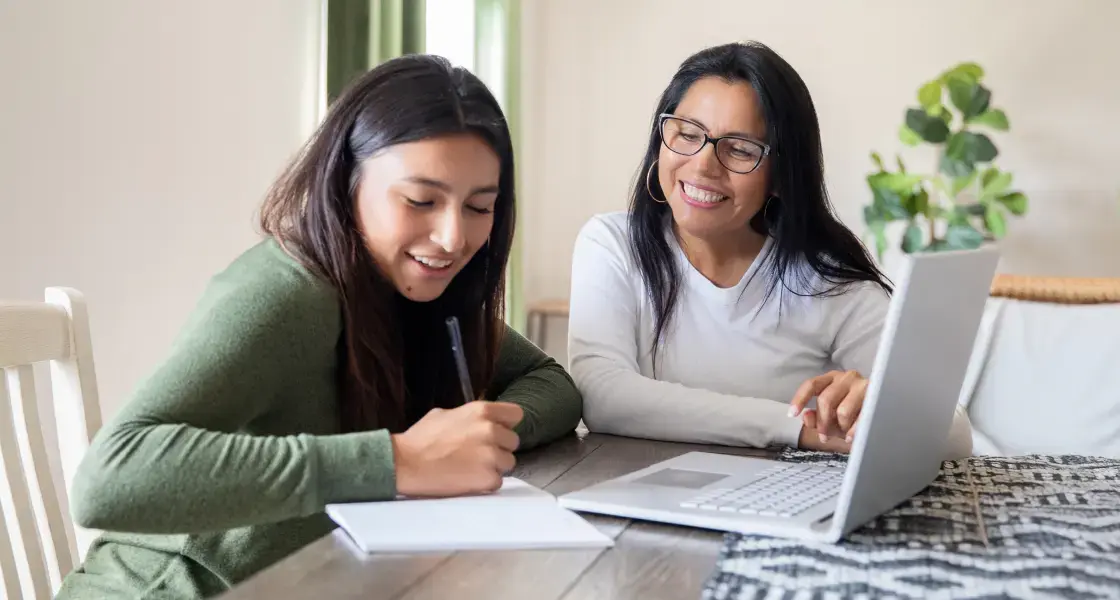Sarah Smithers always knew that she wanted to be a teacher. That's why she pursued a career in the public school system after college, eventually landing her own classroom.
But, while she loved being able to work with her students, there were challenges in the public school system—like too little time for teaching or reinforcing student learning—that Sarah realized didn't fit her personality. It was a surprising discovery, but she knew quickly that classroom teaching just wasn't her thing.
Shortly after that, Sarah realized that classroom learning might not be her son's thing either. So, she and her husband discussed trying homeschooling. Sarah says that the decision ultimately came down to knowing that her kids needed something different—and that she could provide it!
Parents are often surprised when they learn that some classroom teachers homeschool their kids. Sarah recently sat down with our Community Guy, Fernando, to talk about why these teachers might choose to homeschool.
If you're thinking about getting started with homeschooling or want to find new ways to support your public-school learners at home, Sarah offers some amazing tips and insights. Below are some of our key takeaways, or you can check out the full recording here.
Meet Outschool educator Sarah Smithers
Sarah Smithers has been an educator on Outschool since 2017, when our platform was still in its infancy. It was a big deal for Sarah. Not only was she one of our first educators, but she'd recently decided to leave the traditional classroom environment, too. She knew that she loved teaching. She just wasn't sure that she loved teaching in a brick-and-mortar school.
Leaving the public school system was a big transition, but Sarah shared that her life balance has never been better than it is now. She teaches small-group classes on Outschool, where she uses her Masters-level education to teach Language Arts and Visual Art to help students thrive.
Sarah wasn't the only one who made the transition from public school to home-based learning. Within a few years of leaving the classroom, Sarah was teaching both of her younger kids at home. She's been homeschooling and loving it for seven years now.
Sarah was eager to share her experience and tips with our Community so that every parent who is thinking about homeschooling feels empowered to make the right decision for their kids.
Meeting kids’ needs through homeschooling
When her daughter started second grade, Sarah noticed that she was struggling with her reading skills. She knew it wasn't the fault of her daughter's teacher, who was providing the best education they could offer to a busy group of 2nd graders.
She also knew that she could do something to help her daughter. After all, Sarah was already homeschooling her younger son successfully. Why not try teaching her daughter too?
Sarah was a credentialed Language Arts teacher, and she knew that her special skillset could help her daughter catch up in reading. After discussing it with her husband, Sarah's daughter made the leap from public school to homeschool.
Sarah stresses that her decision to homeschool wasn't based on a dislike for the public school system. She says that she has immense respect for teachers, who try to accomplish an impossible number of tasks in limited time.
Sarah shared that classroom teachers simply don't have one-on-one time to go back and reinforce learning with individual students. As a teacher, Sarah often felt that she didn't even have enough time for instruction because she had to spend so much time managing her classes.
For Sarah and her family, homeschooling is less about dealing with academic challenges and more about an opportunity to help kids learn, grow, and develop. It's also an opportunity to allow students to go at their own pace and work with their strengths. Sarah has seen the proof firsthand. She slowed down the pace of reading instruction for her daughter, and she was soon testing above level in comprehension.
Homeschooling has been very successful for Sarah and her children, but she knows that things can change. She shared that her family has a "gut check" about their schooling arrangement every year and asks one question: Is this still working?
Designing learning time that meets student needs
Many public school teachers have to 'teach down the middle' in order to meet district and state learning goals. That means they can't spend extra time teaching kids who are either very gifted or who are struggling with learning disabilities.
As a homeschooler, you can design a learning experience that meets the unique needs of your students. Some of that means identifying your kids’ 'learning style' and finding curriculum that fits it. Remember that you don't have to do it all yourself. You can enroll your children in 1-on-1 online tutoring or in homeschool clubs that will help reinforce what you're teaching.
There are other 'soft skills' that successful homeschoolers develop too. Some of the factors Sarah says have contributed to her success teaching at home include
- Knowing her kids very well
- Having the opportunity to understand how her kids learn
- Gaining the ability to read each other's moods and personalities intuitively
Fernando added that observing their kids and knowing what they need is something every parent can do regardless of formal training or experience. If you're thinking about switching to homeschooling, be sure to read our free guide to getting started with homeschooling.
How to know if you should make the homeschool switch
When asked about homeschooling, Sarah likes to say that "it's not right for everyone, but it's right for our family." Knowing whether or not you should homeschool is really just about sitting down and evaluating what your child needs and whether they will do best getting that at home or in a brick-and-mortar school.
Sarah suggested that parents who want to homeschool but are unsure or afraid should simply commit to trying it for a year. There are plenty of support resources to help, from homeschool schedule templates to tutorials on evaluating and comparing curriculum.
Remember that all families homeschool differently, too, and that's okay. Sarah shared that she doesn't think "there's any one expert in how to homeschool." What really matters is that you become an expert in how to homeschool your specific kids. That might mean deschooling your kids or trying out an online homeschool program.
Harness the power of flexible learning with Outschool
For Sarah, teaching on Outschool offers her the freedom to be creative and flexible. Learning via Outschool offers that same creativity and flexibility to kids, too. How?
Our Community works hard to support and welcome learners of all backgrounds. If you want to make the homeschool switch, check out our full-curriculum programs or enroll your children in a fun social club where they can learn through play and conversation.
No matter how your kids learn, you'll be able to find an Outschool educator they love.


.svg)
.svg)







